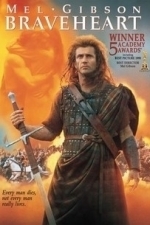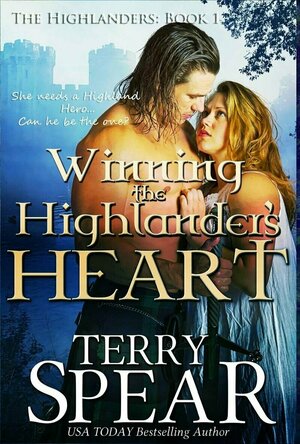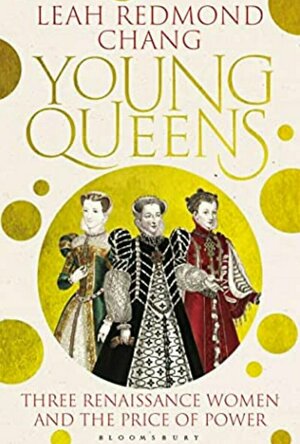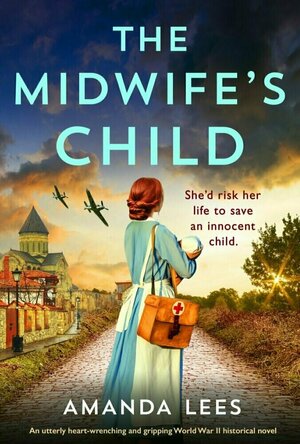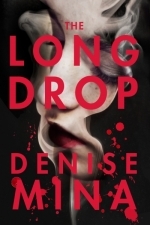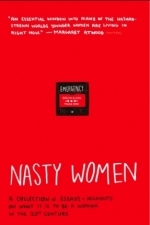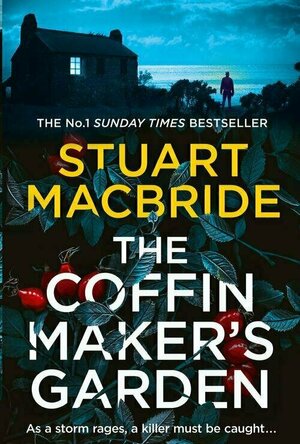Search
Search results
Eilidh G Clark (177 KP) rated Braveheart (1995) in Movies
Jun 23, 2019
Lyndsey Gollogly (2893 KP) rated Winning the Highlander's Heart (The Highlanders #1) in Books
Aug 30, 2020
156 of 200
Audio!
Winning the Highlander’s Heart ( Highlanders book 1)
By Terry Spear
Countess Anice vows to flee the amorous advances of King Henry I, and return to her home in the Highlands, where she hopes to find a laird to wed. Highlander Laird Malcolm MacNeill, seeking an English bride, becomes entangled with the Scottish lass while trying to find out why her staff has vanished.
I listened to this on audio I’m not really used to audio books so took a while to get Into! But I really enjoyed it what’s not to love Hot Scottish highlanders,drama ,action and romance. Historic fiction is a big love of mine and this didn’t disappoint!
Audio!
Winning the Highlander’s Heart ( Highlanders book 1)
By Terry Spear
Countess Anice vows to flee the amorous advances of King Henry I, and return to her home in the Highlands, where she hopes to find a laird to wed. Highlander Laird Malcolm MacNeill, seeking an English bride, becomes entangled with the Scottish lass while trying to find out why her staff has vanished.
I listened to this on audio I’m not really used to audio books so took a while to get Into! But I really enjoyed it what’s not to love Hot Scottish highlanders,drama ,action and romance. Historic fiction is a big love of mine and this didn’t disappoint!
Alice (12 KP) rated A Devil in Scotland (No Ordinary Hero, #3) in Books
Jul 3, 2018
This was the first regency romance book I've read in over a year where I've been focusing on the fantasy genre.
I'm very glad I read this book and it was filled with plenty of action, a thrilling tale of revenge and a Scottish accent to die for.
The writing and story had an easy-going flow to it that made the book finish quicker than I would have liked. Each character was written with a specific role in mind and there were no filler characters which was great.
Each character had their own individual flaws which were written to perfection and there wasn't anything that needed changing with the characters in this book. Sometimes characters are written too perfect and they have no faults of their own which makes it unbelievable even for fiction.
Overall, a good story with a solid plot and solid characters.
I'm very glad I read this book and it was filled with plenty of action, a thrilling tale of revenge and a Scottish accent to die for.
The writing and story had an easy-going flow to it that made the book finish quicker than I would have liked. Each character was written with a specific role in mind and there were no filler characters which was great.
Each character had their own individual flaws which were written to perfection and there wasn't anything that needed changing with the characters in this book. Sometimes characters are written too perfect and they have no faults of their own which makes it unbelievable even for fiction.
Overall, a good story with a solid plot and solid characters.
ClareR (6037 KP) rated Young Queens: Three Renaissance Women and the Price of Power in Books
May 31, 2023
It’s not often that I read a non-fiction history book - I’m more of a historical fiction reader - and I’m really glad that I picked this up.
This book is about the lives of Catherine de’ Medici (married to the French Henry II), Elisabeth of Spain and Mary, Queen of Scots and how their lives wove together.
There are some really interesting facts here (Mary was nearly 6 feet tall - now THIS is the kind of fact I live for!). But it was the personal side that really interested me. Catherine loved her children fiercely even though she had little time with them. She wanted to know every detail of their lives. Her letters to Elisabeth when she went to Spain were filled with family gossip and instructions. Just the kind of stuff that any mother would send their daughter, and Elisabeth appeared to want to always make her mother proud.
Mary and Elisabeth were like sisters, so when Mary needed Elizabeth’s and Spain’s support when the Scottish Lords turned against her, it must have hurt her greatly when they refused to help.
What I liked most was having the opportunity to dip my toes in to the history of France and Spain. It sounded as tumultuous as our own.
I do think that I’m going to have to follow up on Cathrine de’ Medici, though. Now she sounds fascinating!
I’m so glad that I read this - thanks to The Pigeonhole!
This book is about the lives of Catherine de’ Medici (married to the French Henry II), Elisabeth of Spain and Mary, Queen of Scots and how their lives wove together.
There are some really interesting facts here (Mary was nearly 6 feet tall - now THIS is the kind of fact I live for!). But it was the personal side that really interested me. Catherine loved her children fiercely even though she had little time with them. She wanted to know every detail of their lives. Her letters to Elisabeth when she went to Spain were filled with family gossip and instructions. Just the kind of stuff that any mother would send their daughter, and Elisabeth appeared to want to always make her mother proud.
Mary and Elisabeth were like sisters, so when Mary needed Elizabeth’s and Spain’s support when the Scottish Lords turned against her, it must have hurt her greatly when they refused to help.
What I liked most was having the opportunity to dip my toes in to the history of France and Spain. It sounded as tumultuous as our own.
I do think that I’m going to have to follow up on Cathrine de’ Medici, though. Now she sounds fascinating!
I’m so glad that I read this - thanks to The Pigeonhole!
Hazel (2934 KP) rated The Midwife's Child (WW2 Resistance Series #3) in Books
May 21, 2023
The Midwife's Child is an emotional rollercoaster that although is work of fiction, it's based on things that actually happened and real people with the love story element between Maggie and Jamie being based on the true story of a Scottish Commando who met a young woman in a displaced persons camp who had survived the death march.
This is the third in this series but I think it works successfully as a standalone because whilst there are recurring characters, each book is a separate story which focusses on one of those recurring characters.
The Midwife's Child centres around Maggie, a former SOE Special Operations Executive) but now incarcerated in Auschwitz following her capture. There she finds herself working in the camp hospital where the devil incarnate, Joseph Mengele, practised his infamous experiments and where Maggie is determined to save the life of her friend Eva and new born, Leah. The end of the war is fast approaching and the Russians are getting close, Eva is too unwell to go on the forced march so she begs Maggie to save her child and reunite her with her father. A seemingly impossible task but one which Maggie vows to complete.
Told from two timelines, from her time as a doctor working in the 'hospital' at Auschwitz towards the end of the war and the period afterwards, The Midwife's Child is a story of exceptional courage, duty, love, friendship and hope and a story that I highly recommended to those of you who enjoy this genre and I have to thank Bookouture and NetGalley for enabling me to read and share my thoughts of The Midwife's Child.
This is the third in this series but I think it works successfully as a standalone because whilst there are recurring characters, each book is a separate story which focusses on one of those recurring characters.
The Midwife's Child centres around Maggie, a former SOE Special Operations Executive) but now incarcerated in Auschwitz following her capture. There she finds herself working in the camp hospital where the devil incarnate, Joseph Mengele, practised his infamous experiments and where Maggie is determined to save the life of her friend Eva and new born, Leah. The end of the war is fast approaching and the Russians are getting close, Eva is too unwell to go on the forced march so she begs Maggie to save her child and reunite her with her father. A seemingly impossible task but one which Maggie vows to complete.
Told from two timelines, from her time as a doctor working in the 'hospital' at Auschwitz towards the end of the war and the period afterwards, The Midwife's Child is a story of exceptional courage, duty, love, friendship and hope and a story that I highly recommended to those of you who enjoy this genre and I have to thank Bookouture and NetGalley for enabling me to read and share my thoughts of The Midwife's Child.
Zuky the BookBum (15 KP) rated The Long Drop in Books
Mar 15, 2018
This is the first book I've read by Denise Mina, but it won't be the last! I found this novel instantly exciting and by the time I got to 30% I was hooked and couldn't put it down, finally finishing it at 1:30 in the morning. This novel drips with menace and chills you to the bone in some parts, it's really a fantastic and quick thriller read.
This book tells the story of Peter Manuel, real life Scottish serial killer. Like with so many other books on the market nowadays, this is a non-fic-fiction novel. It's based its contents on real events but the author has weaved a story around it too.
What's so striking about this novel is Mina's ability to tell a story. The story flowed brilliantly and it never lost my interest, even when we started getting into some of the more in-depth and historic facts about Glasgow. The writing style is short and snappy, so you really feel yourself racing through this.
Characters. Oh wow, the characters. Somehow, you feel simultaneously angry and empathetic for everyone in this book, even Peter Manuel, the serial killer. Mina's character development is superb and you find yourself getting drawn into each person's story so quickly. We follow Peter Manuel and William Watt throughout most of this novel, but there are small scenes popped in that introduce characters we only meet once throughout the entire book, yet I still felt like I knew them and I still invested myself in their stories, no matter how short.
Overall, this book was really superb and if you're looking for something dark, but quick to read, this is the book for you. At only 240 pages, you'll find yourself racing through this! I can't wait to read more of Mina's work, if it's all as good as this one.
This book tells the story of Peter Manuel, real life Scottish serial killer. Like with so many other books on the market nowadays, this is a non-fic-fiction novel. It's based its contents on real events but the author has weaved a story around it too.
What's so striking about this novel is Mina's ability to tell a story. The story flowed brilliantly and it never lost my interest, even when we started getting into some of the more in-depth and historic facts about Glasgow. The writing style is short and snappy, so you really feel yourself racing through this.
Characters. Oh wow, the characters. Somehow, you feel simultaneously angry and empathetic for everyone in this book, even Peter Manuel, the serial killer. Mina's character development is superb and you find yourself getting drawn into each person's story so quickly. We follow Peter Manuel and William Watt throughout most of this novel, but there are small scenes popped in that introduce characters we only meet once throughout the entire book, yet I still felt like I knew them and I still invested myself in their stories, no matter how short.
Overall, this book was really superb and if you're looking for something dark, but quick to read, this is the book for you. At only 240 pages, you'll find yourself racing through this! I can't wait to read more of Mina's work, if it's all as good as this one.
Hazel (1853 KP) rated Into the Dim (Into the Dim, #1) in Books
Dec 17, 2018
<i>This ARC was provided by the publisher via NetGalley in exchange for an honest review
Into The Dim</i> by Janet B. Taylor begins with an empty coffin. Fragile sixteen year old Hope is at her mother’s memorial service after her mother’s body was unrecovered after a horrific earthquake. Despite the opinion of her stepfather’s family, Hope is convinced that her mother is still alive. However she has not time to convince anyone before she is shipped off to the Scottish Highlands to spend time with her mother’s sister, Lady Lucinda Carlyle.
Hope finds herself at Christopher Manor, a forbidding ancient mansion that reminds her of <i>Hogwarts</i> (I love that <i>Harry Potter</i> is easily mentioned in many contemporary novels these days! There is also a <i>Doctor Who</i> reference in this book). Despite the old-fashioned setting, the inhabitants are the complete opposite. Firstly there is Phoebe, a bubbly blue-haired girl who is excited about Hope’s arrival at the manor. Phoebe’s brother, Collum, on the other hand, has a contrasting personality. Then there is Lu, who, despite her title, is younger than some may initially imagine her to be.
Through these new characters, Hope learns that her mother is indeed still alive, but trapped somewhere beyond all logic and reason. What is worse, Hope, who is practically scared of her own shadow, along with Phoebe and Collum are the only people who can rescue her. So begins their dangerous but exciting adventure.
<i>Into The Dim</i> is both a contemporary and historical novel, with the science fiction element of time travel thrown in. Time travel is nothing new in fiction, and Taylor’s idea is even based upon the scientist, Nikola Tesla’s discoveries. The storyline itself is a bit of fun with witty characters and humorous banter, yet there is so much more to it than that. Taylor has concocted enough research to help readers to learn something new. Firstly there is Tesla, as already mentioned, and then there is the knowledge and detail of twelfth century London, in particularly involving Eleanor of Aquitaine.
Although the main characters are in their late teens, younger teenagers can also enjoy<i> Into The Dim</i>. There is the occasional reference to mature content, but this is within the context of a historical period, in which younger readers should probably be aware of already from their school history lessons. If you love this book, look out for the sequel next year!
Into The Dim</i> by Janet B. Taylor begins with an empty coffin. Fragile sixteen year old Hope is at her mother’s memorial service after her mother’s body was unrecovered after a horrific earthquake. Despite the opinion of her stepfather’s family, Hope is convinced that her mother is still alive. However she has not time to convince anyone before she is shipped off to the Scottish Highlands to spend time with her mother’s sister, Lady Lucinda Carlyle.
Hope finds herself at Christopher Manor, a forbidding ancient mansion that reminds her of <i>Hogwarts</i> (I love that <i>Harry Potter</i> is easily mentioned in many contemporary novels these days! There is also a <i>Doctor Who</i> reference in this book). Despite the old-fashioned setting, the inhabitants are the complete opposite. Firstly there is Phoebe, a bubbly blue-haired girl who is excited about Hope’s arrival at the manor. Phoebe’s brother, Collum, on the other hand, has a contrasting personality. Then there is Lu, who, despite her title, is younger than some may initially imagine her to be.
Through these new characters, Hope learns that her mother is indeed still alive, but trapped somewhere beyond all logic and reason. What is worse, Hope, who is practically scared of her own shadow, along with Phoebe and Collum are the only people who can rescue her. So begins their dangerous but exciting adventure.
<i>Into The Dim</i> is both a contemporary and historical novel, with the science fiction element of time travel thrown in. Time travel is nothing new in fiction, and Taylor’s idea is even based upon the scientist, Nikola Tesla’s discoveries. The storyline itself is a bit of fun with witty characters and humorous banter, yet there is so much more to it than that. Taylor has concocted enough research to help readers to learn something new. Firstly there is Tesla, as already mentioned, and then there is the knowledge and detail of twelfth century London, in particularly involving Eleanor of Aquitaine.
Although the main characters are in their late teens, younger teenagers can also enjoy<i> Into The Dim</i>. There is the occasional reference to mature content, but this is within the context of a historical period, in which younger readers should probably be aware of already from their school history lessons. If you love this book, look out for the sequel next year!
Eilidh G Clark (177 KP) rated Nasty Women in Books
May 13, 2017
Nasty women is hard-hitting, eye-opening, and unashamedly honest.
‘Sometimes the role model you need is not an example to aspire to, but someone who reflects back the parts of yourself that society deems fit.’ -
Becca Inglis
Nasty Women, published by 404 ink, is a collection of essays about what it is, and how it feels to be a woman in the 21st century. When I first picked up the book, I assumed, like I think most readers would, that it would be an easy book to just pick up and put down whenever I had a spare ten minutes. Wrong, I was sucked into this book right from the beginning, and read it all in a day. That doesn’t mean it was an easy read, or perhaps easy is the wrong word – it isn’t a comfortable read - and it isn’t meant to be. Nasty women is hard-hitting, eye-opening, and unashamedly honest.
The book opens with ‘Independence Day’ by Katie Muriel. A story of mixed race and identity in Trump’s America, Muriel discusses her experience of inter-family racism, heightened by political differences, ‘This is not the first, nor is it the last family divide Trump will leave in his wake, but I refuse to think of him as some deity who stands around shifting pieces on a board in his golden war room.’ The anger in this piece is clear, but it is the rationalism and clarity of the writer that speaks volumes. Race, racism and xenophobia, is a prominent feature in these stories. Claire L. Heuchan, for example, talks about ‘Othering’ a term that readers will see repeatedly in this book, ‘Scotland,’ she writes, ‘is a fairly isolating place to be a black woman.’
Survival is a key trope in Nasty Women. Mel Reeve, in ‘The Nastiness of Survival,’ talks about being a survivor of rape and emotional abuse, ‘I do not fit the ‘right’ definition of someone who has been raped.’ This statement alone is filled with irony.
I was particularly drawn to Laura Waddell’s essay, ‘Against Stereotypes: Working Class Girls and Working Class Art.’ Laura talks about the difficulty of both gender and class inequality, and, in particular, the lack of working class writers and working class fiction being published, ‘I have read a lot of fiction’ she says, ‘I have read almost none from housing estates such as the one I grew up on. These stories are missing, from shelves, and from the record.’ As a Scottish fiction writer from a working-class background myself, these words resonate deeply.
Alice Tarbuck’s ‘Foraging and Feminism: Hedge-Witchcraft in the 21st Century’, is almost fun to read in a deeply devastating way. There is a desperate tone in this piece, and a desperate need to escape society. ‘There is beauty and bounty around us if we look for it, and perhaps that is all the magic we need. Or perhaps, what we need is real magic, whether that comes in the form of resistance and community or the form of blackthorn charms and skullcap tinctures, and howling to the moon.
I loved this book. This book gives women a voice. And it is loud! Well done 404 Ink, and all the contributors, for bravely breaking the silence.
Becca Inglis
Nasty Women, published by 404 ink, is a collection of essays about what it is, and how it feels to be a woman in the 21st century. When I first picked up the book, I assumed, like I think most readers would, that it would be an easy book to just pick up and put down whenever I had a spare ten minutes. Wrong, I was sucked into this book right from the beginning, and read it all in a day. That doesn’t mean it was an easy read, or perhaps easy is the wrong word – it isn’t a comfortable read - and it isn’t meant to be. Nasty women is hard-hitting, eye-opening, and unashamedly honest.
The book opens with ‘Independence Day’ by Katie Muriel. A story of mixed race and identity in Trump’s America, Muriel discusses her experience of inter-family racism, heightened by political differences, ‘This is not the first, nor is it the last family divide Trump will leave in his wake, but I refuse to think of him as some deity who stands around shifting pieces on a board in his golden war room.’ The anger in this piece is clear, but it is the rationalism and clarity of the writer that speaks volumes. Race, racism and xenophobia, is a prominent feature in these stories. Claire L. Heuchan, for example, talks about ‘Othering’ a term that readers will see repeatedly in this book, ‘Scotland,’ she writes, ‘is a fairly isolating place to be a black woman.’
Survival is a key trope in Nasty Women. Mel Reeve, in ‘The Nastiness of Survival,’ talks about being a survivor of rape and emotional abuse, ‘I do not fit the ‘right’ definition of someone who has been raped.’ This statement alone is filled with irony.
I was particularly drawn to Laura Waddell’s essay, ‘Against Stereotypes: Working Class Girls and Working Class Art.’ Laura talks about the difficulty of both gender and class inequality, and, in particular, the lack of working class writers and working class fiction being published, ‘I have read a lot of fiction’ she says, ‘I have read almost none from housing estates such as the one I grew up on. These stories are missing, from shelves, and from the record.’ As a Scottish fiction writer from a working-class background myself, these words resonate deeply.
Alice Tarbuck’s ‘Foraging and Feminism: Hedge-Witchcraft in the 21st Century’, is almost fun to read in a deeply devastating way. There is a desperate tone in this piece, and a desperate need to escape society. ‘There is beauty and bounty around us if we look for it, and perhaps that is all the magic we need. Or perhaps, what we need is real magic, whether that comes in the form of resistance and community or the form of blackthorn charms and skullcap tinctures, and howling to the moon.
I loved this book. This book gives women a voice. And it is loud! Well done 404 Ink, and all the contributors, for bravely breaking the silence.
ClareR (6037 KP) rated The Coffinmaker's Garden (Ash Henderson #3) in Books
Feb 2, 2021
The Coffinmakers Garden is a gritty thriller with a healthy dash of black humour. There is clearly a good reason why Ash Henderson is an ex-Detective Inspector, and it’s not just his severe arthritis. This is a man who will pretty much stop at nothing to bring the criminals to justice - unless he’s using criminals to help him get what he wants. Ash is a teeny bit corrupt, I think (for the record, I don’t think you can be a teeny bit anything: you’re either doing it, or you aren’t).
I really enjoyed the dark humour, and I’m not particularly squeamish, so the murdery bits didn’t bother me - in fact I really enjoyed the whole book. Yes, Ash’s actions were a bit OTT sometimes, but in my opinion, this is a piece of fiction, not a documentary on police procedure 🤷🏼♀️ It did read a bit like a cop film set in a big US city, except with a much smaller budget and Scottish accents. And let’s face it - Ash Henderson has a dog that he clearly adores, so he can’t be all bad!
I liked that there were actually two investigations running at the same time - one of which Ash is kicked off because of his poor behaviour. He still seems to manage to be involved with them both though, which must have been frankly exhausting for him!
The fact that I haven’t read the first two books in this series didn’t lessen my enjoyment, it merely made me curious as to what happened in the previous books. I wasn’t left not understanding what was going on. Short, appropriate explanations saw to that. The characters were richly described and fascinating to read about - they were all very different people.
So, another great book chosen by The Pigeonhole, and I really appreciated the short videos that Stuart McBride prepared for us to watch throughout the book.
I really enjoyed the dark humour, and I’m not particularly squeamish, so the murdery bits didn’t bother me - in fact I really enjoyed the whole book. Yes, Ash’s actions were a bit OTT sometimes, but in my opinion, this is a piece of fiction, not a documentary on police procedure 🤷🏼♀️ It did read a bit like a cop film set in a big US city, except with a much smaller budget and Scottish accents. And let’s face it - Ash Henderson has a dog that he clearly adores, so he can’t be all bad!
I liked that there were actually two investigations running at the same time - one of which Ash is kicked off because of his poor behaviour. He still seems to manage to be involved with them both though, which must have been frankly exhausting for him!
The fact that I haven’t read the first two books in this series didn’t lessen my enjoyment, it merely made me curious as to what happened in the previous books. I wasn’t left not understanding what was going on. Short, appropriate explanations saw to that. The characters were richly described and fascinating to read about - they were all very different people.
So, another great book chosen by The Pigeonhole, and I really appreciated the short videos that Stuart McBride prepared for us to watch throughout the book.
Hazel (1853 KP) rated Bring Me Home in Books
Dec 14, 2018
<i>I received this book for free through Goodreads First Reads.</i>
To tell the truth, despite knowing that Alan Titchmarsh is a celebrity gardener and TV presenter, I was unaware that he was also a novelist; so I honestly had no idea what to expect. <i>Bring Me Home</i>, Titchmarsh’s latest piece of fiction, is located in the Scottish Highlands and tells the life story of Charlie Stuart who lives in Castle Sodhail.
The opening chapter is set in the year 2000 at the end of a summer party hosted by Charlie in the castle grounds. We find out that Charlie needs to tell his children about something he has done and he is worried about their reactions. I immediately assumed this would be something along the lines of financial difficulties: someone who owns a castle must be in need of a vast amount of money. This assumption, however, was way off the mark.
The subsequent chapters tell of Charlie’s past, beginning in 1960, when he was ten years old, and progressing chronologically until 2000 where we, once again, meet with the familiar opening scene. Throughout these sections we read of Egglestone Academy in Inverness, which he attended with his friend, Gordon Mackenzie; we learn of his mother’s death and how he copes with his new, typically not very nice, stepmother. He marries a childhood friend, Eleanor – this happened a bit too suddenly in my view – and this is where things begin to transpire; events which could be what Charlie wants to speak to his children about.
To be frank, I sometimes found the narrative a little boring, particularly throughout the first half in which, I felt, nothing particularly significant occurred. The latter half was better with more events taking place, which made me wonder how things would be resolved. There was one part of the storyline which, although keeps Gordon in the book as an important character, felt rather pointless particularly as it had nothing to do with the final few chapters.
One thing I did like about this book was that Titchmarsh and included relevant quotes from various sources at the beginning of each chapter. These always related in some way to what that particular chapter was about. As I have not read any other books by the author, I do not know if this was a one off idea or whether he always does this, but it reminded me of the character Gordon Mackenzie who has a literary quote for every occasion.
Overall I did not think much of this novel but it was not terrible. The writing style was easy to read and understand but I personally thought the storyline needed to be stronger.
To tell the truth, despite knowing that Alan Titchmarsh is a celebrity gardener and TV presenter, I was unaware that he was also a novelist; so I honestly had no idea what to expect. <i>Bring Me Home</i>, Titchmarsh’s latest piece of fiction, is located in the Scottish Highlands and tells the life story of Charlie Stuart who lives in Castle Sodhail.
The opening chapter is set in the year 2000 at the end of a summer party hosted by Charlie in the castle grounds. We find out that Charlie needs to tell his children about something he has done and he is worried about their reactions. I immediately assumed this would be something along the lines of financial difficulties: someone who owns a castle must be in need of a vast amount of money. This assumption, however, was way off the mark.
The subsequent chapters tell of Charlie’s past, beginning in 1960, when he was ten years old, and progressing chronologically until 2000 where we, once again, meet with the familiar opening scene. Throughout these sections we read of Egglestone Academy in Inverness, which he attended with his friend, Gordon Mackenzie; we learn of his mother’s death and how he copes with his new, typically not very nice, stepmother. He marries a childhood friend, Eleanor – this happened a bit too suddenly in my view – and this is where things begin to transpire; events which could be what Charlie wants to speak to his children about.
To be frank, I sometimes found the narrative a little boring, particularly throughout the first half in which, I felt, nothing particularly significant occurred. The latter half was better with more events taking place, which made me wonder how things would be resolved. There was one part of the storyline which, although keeps Gordon in the book as an important character, felt rather pointless particularly as it had nothing to do with the final few chapters.
One thing I did like about this book was that Titchmarsh and included relevant quotes from various sources at the beginning of each chapter. These always related in some way to what that particular chapter was about. As I have not read any other books by the author, I do not know if this was a one off idea or whether he always does this, but it reminded me of the character Gordon Mackenzie who has a literary quote for every occasion.
Overall I did not think much of this novel but it was not terrible. The writing style was easy to read and understand but I personally thought the storyline needed to be stronger.
